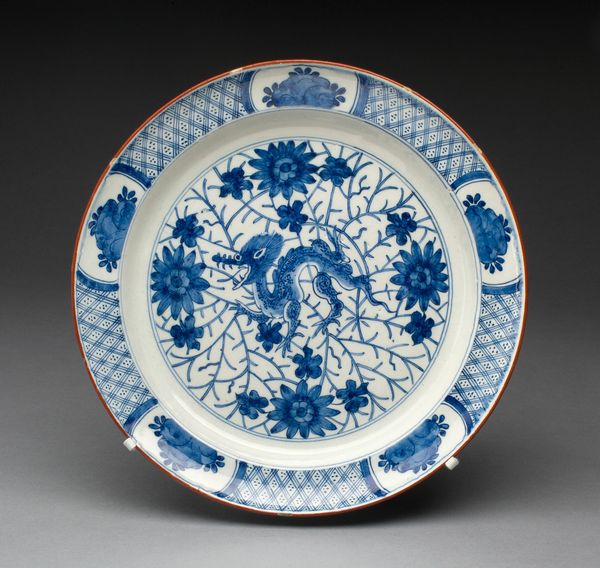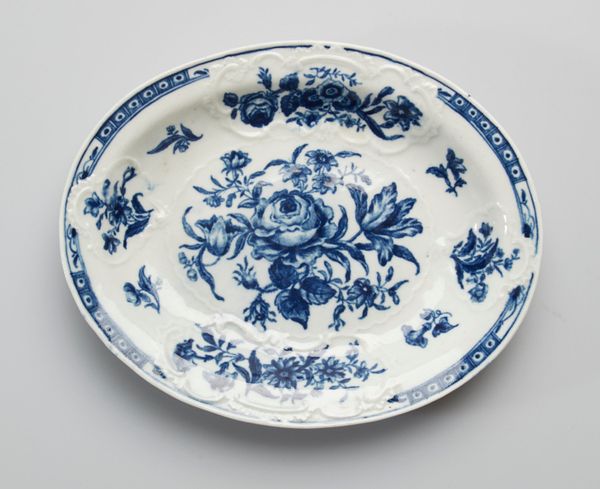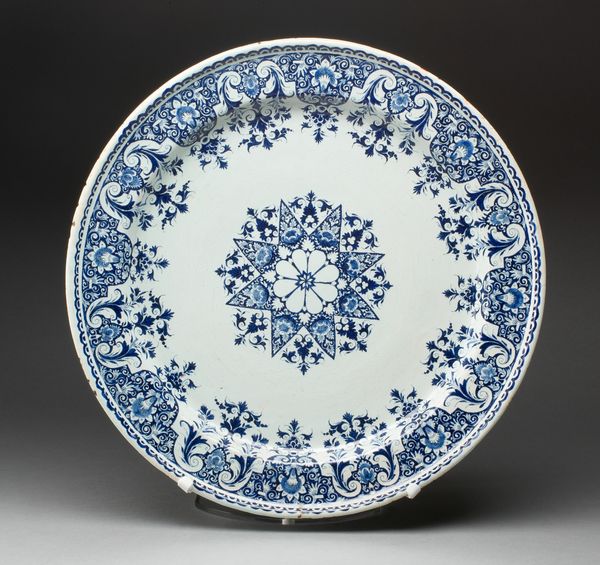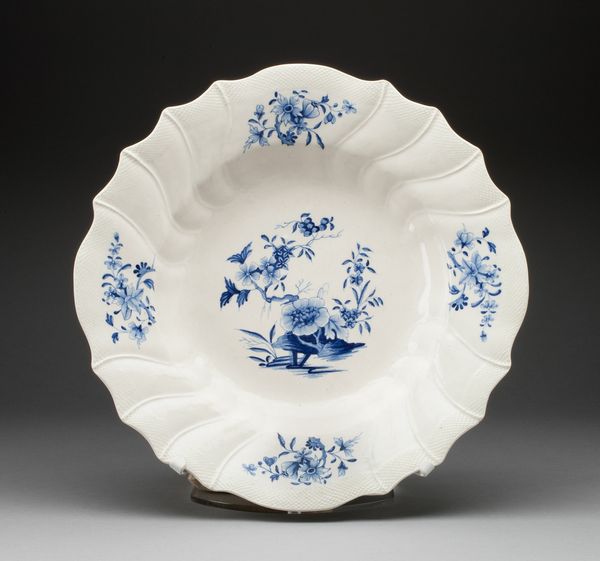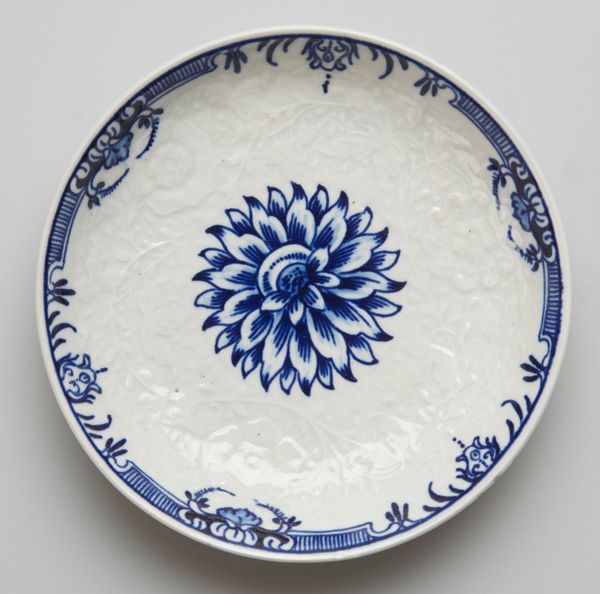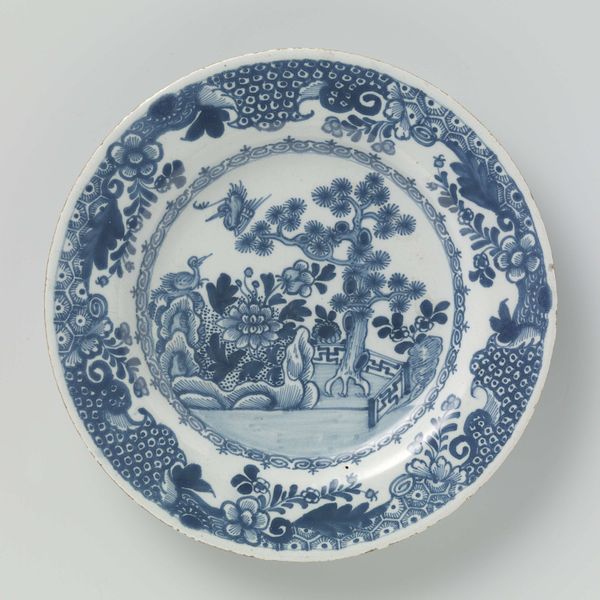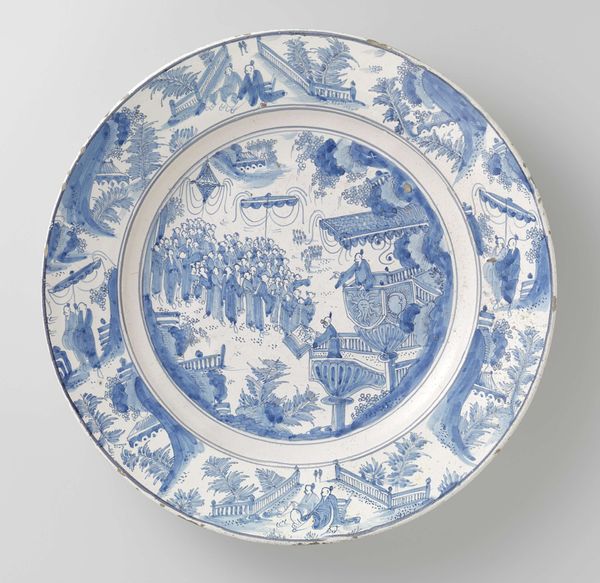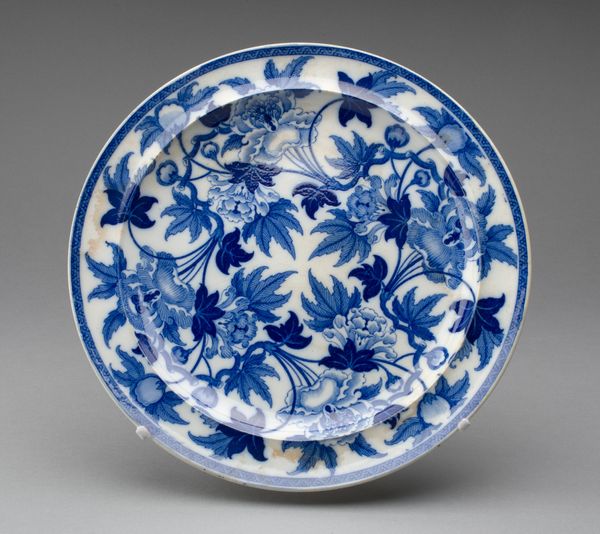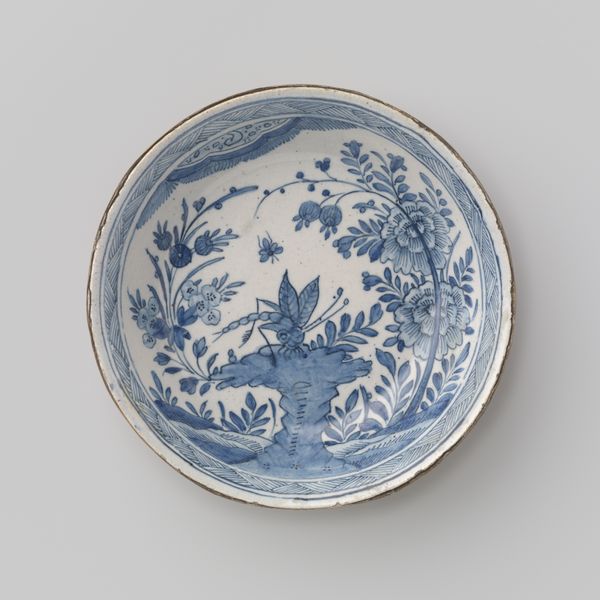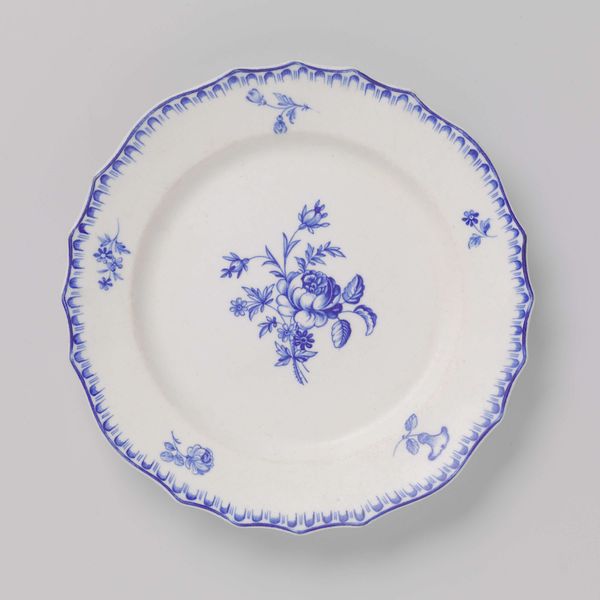
drawing, ceramic, porcelain, earthenware
#
drawing
#
pottery
#
asian-art
#
ceramic
#
porcelain
#
earthenware
#
folk-art
#
geometric
#
ceramic
#
decorative-art
Dimensions: 1 5/8 × 7 1/4 × 7 1/4 in. (4.13 × 18.42 × 18.42 cm)
Copyright: No Known Copyright
Curator: This is a porcelain plate created by the Fukami Family Workshop around the early 21st century. It resides here at the Minneapolis Institute of Art. What strikes you initially? Editor: There's a certain breezy quality about it. The simple blue on white glaze feels very clean, light even. It would be at home on a breakfast table, perhaps on a sunny day. Curator: Indeed. Considering the plate as a functional object, how do you see its form intersecting with its decoration? The repeating motifs of ribbons and flowers around the rim have resonance. Are they simply aesthetic choices or do they tell us something about identity, about place? Editor: The materiality is crucial. This wasn't mass-produced. Porcelain from a workshop signifies handcraft, artistry. We're looking at deliberate skill in firing and painting, probably drawing upon long-held techniques and familial labor, a conscious decision against industrial modes of ceramic production. Curator: Exactly, and that decision speaks volumes. The choice of decoration reinforces the handcrafted nature of this work. Blue-and-white porcelain, after all, is so deeply intertwined with the history of trade and cultural exchange, a visible example of intercultural relations and colonial consumption habits. What's produced and by whom becomes a statement. Editor: You're prompting me to think more deeply about labor here. There is implied pride inherent to the craftsmanship here. The geometric divisions almost democratize this ceramic’s purpose; this isn’t simply decorative—it signals a broader intersection with functional needs within a familial economy. It reminds me how everyday objects reflect larger social narratives. Curator: Absolutely. How consumption is inherently linked to its manufacturing origins. These aren’t disparate details; they coalesce in this everyday object to tell complex stories of global networks and societal needs. I would venture the symbols speak about luck and hope as much as daily utility. Editor: Reflecting on it now, seeing its form and ornamentation more deeply, I better perceive this intersection. It makes me see the history baked into every dish.
Comments
No comments
Be the first to comment and join the conversation on the ultimate creative platform.

